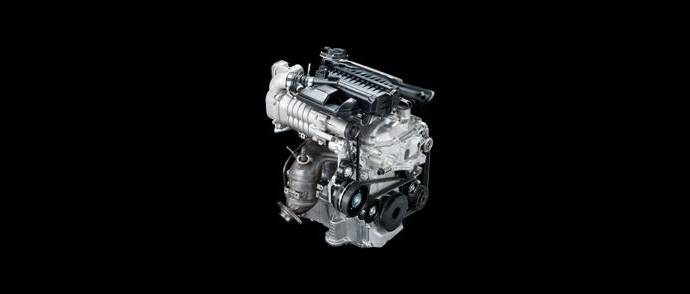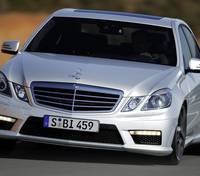Nissan is introducing a new 1.2-litre 3-cylinder supercharged engine named the HR12DDR which aims at being the lowest fuel consuming gasoline engine in the world.
The new 1.2-litre 3-cylinder supercharged engine has the same output as a 1.5-litre unit, while CO2 emission level is 95 grams per Km.
Some info regarding the technology behind the new Nissan 1.2-litre 3-cylinder supercharged engine says that the Miller cycle was adopted meaning the power stroke is enhanced by the compression stroke and the thermal energy of the fuel is converted into kinetic energy more efficiently than in a regular 4-stroke cycle engine.
The supercharger on this new Nissan 1.2-litre 3-cylinder engine is fitted with an on/off clutch while the hydrogen-free coating for the piston rings and the variable displacement oil pump help reduce friction by up to 30 percent.
For more details regarding the new 1.2-litre 3-cylinder supercharged Nissan engine available below the jump.
Nissan press release :
YOKOHAMA (July 16, 2010)-Nissan Motor Co., Ltd. today announced its newly developed HR12DDR, a 1.2 liter engine, aiming to achieve the lowest level of fuel consumption in the world for gasoline-powered cars, with an engine power output equivalent to that of a 1.5L engine(s) and CO2 emission of 95 grams per kilometer (New European Drive Cycle).
The engine will be mounted on the new "Micra (also known as March in other markets)" in the European market in the first half of 2011. The engine is based on the HR12DE, the 1.2L 3-cylinder engine mounted on the new Nissan MARCH. High engine performance and low fuel consumption levels have been achieved through the adoption of the Miller cycle, gasoline direct injection system (DIG), and a highly efficient supercharger, in combination with an Idling Stop system.
Here are details of the technologies:
By adopting the Miller cycle, in which the power stroke is enhanced by the compression stroke as a result of delaying the closing timing of the intake valve, the thermal energy of the fuel is converted to kinetic energy much more efficiently than it is with regular 4-stroke cycle engines, and pumping loss caused by intake manifold negative pressure has been reduced.
Moreover, the highly compressed and high-temperature air-fuel mixture is cooled by the latent heat of the vaporization of fuel directly injected into the cylinder, and the temperature of the combustion chamber is lowered by adopting a piston-cooling channel and sodium-filled valves to control detonation. These technologies have enabled a compression ratio of 13*1 for improved combustion efficiency.
The supercharger*2 is equipped with an automatic on/off clutch, which means that both high fuel efficiency and high engine performance can be achieved by automatically switching off supercharging while driving at low speeds, such as on city roads.
Moreover, adoption of a hydrogen-free diamond-like carbon (DLC) coating for the piston rings and a variable displacement oil pump helps to reduce friction by up to 30%, compared with conventional 4-cylinder engines with similar performance levels.
These technologies are the culmination of the company’s research and development efforts based on the Nissan Green Program 2010 (NGP 2010) – Nissan’s mid-term environmental action plan that includes initiatives to reduce CO2 emissions and introduce truly effective technologies, products and services into the market.
1. *1 Volume ratio of top dead center (TDC) and bottom dead center (BDC). With a higher ratio, higher efficiency (i.e. high performance) can be expected, although it becomes prone to detonation, such as engine knocking. In the case of gasoline-powered engines, the compression ratio is around 10, even for high-performance engines.
2. *2 A system in which a pump engine powered by the output shaft forcibly sends compressed air to the cylinder to gain a similar effect to that of engine displacement.

16 Jul 2010
0


